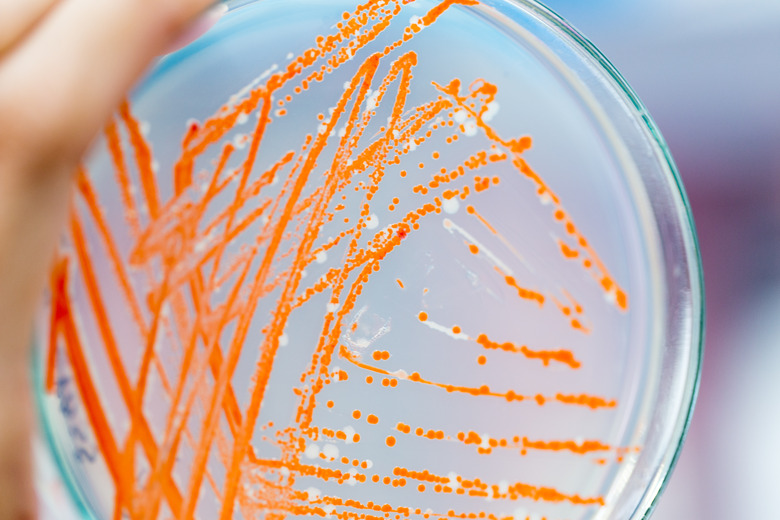Types Of Spore Forming Bacteria
Spore forming bacteria are tougher than the average microscopic unicellular organism. These species, which include the genera Bacillus, Clostridium and Sporolactobacillus, can surround themselves with durable coats of protein that allow them to survive in hostile environmental conditions. As spores, bacteria can remain dormant for years, protected from stresses such as chemicals, heat, radiation and dehydration. When revived, however, these bacteria can cause a number of diseases, including botulism, anthrax, tetanus and acute food poisoning. Learn about some of the major spore forming bacteria below.
Bacillus: Anthrax and Research
Bacillus: Anthrax and Research
Bacillus is a genus of spore forming, aerobic, rod-shaped bacteria. This fairly large group is most notorious for Bacillus anthracis, the bacterium responsible for the deadly disease anthrax. According to the Centers for Disease Control and Prevention, the bacterium's spores allow it to last a long time in the environment before entering people and causing an infection. But another member of this genus, Bacillus subtilis, is commonly used by molecular biology researchers to investigate basic questions of gene regulation and the cell cycle. Other Bacillus species include Bacillus cereus, Bacillus clausii and Bacillus halodenitrificans. Some of these bacteria are common causes of food and medical contamination and can be difficult to eliminate.
Clostridium: Disease and Production
Clostridium: Disease and Production
Clostridium forms spores that differ from those of other bacteria in being pin- or bottle-shaped, not the usual ovals. According to Public Health England, the Clostridium genus contains over 100 species, including harmful pathogens such as:
- _Clostridium botulinum
- Clostridium difficile
- Clostridium perfringens
- Clostridium tetani_
- Clostridium sordellii
However, some species of the bacteria are used commercially to produce ethanol (Clostridium thermocellum) and acetone (Clostridium acetobutylicum), as well as to convert fatty acids to yeasts and propanediol (Clostridium diolis).
Sporolactobacillus: Lactic Acid Makers
Sporolactobacillus: Lactic Acid Makers
Sporolactobacillus are unique among spore forming bacteria in also being lactic acid bacteria. These species, such as Sporolactobacillus dextrus, Sporolactobacillus inulinus, Sporolactobacillus laevis, Sporolactobacillus terrae and Sporolactobacillus vineae, make lactic acid as the end product of their metabolism. They mainly consume carbohydrates such as:
- fructose
- sucrose
- raffinose
- mannose
- inulin
- sorbitol
Sporosarcina: Breaking down Urine
Sporosarcina: Breaking down Urine
Sporosarcina are a group of bacteria with both rod-shaped and round (coccoid) members. The most famous member of the genus, Sporosarcina ureae, is able to break down urea, the chemical that gives urine its distinctive smell. This bacterium is particularly common in soils that receive a lot of urine, such as fields underneath grazing cows. Other species in the genus include Sporosarcina aquimarina, Sporosarcina globispora, Sporosarcina halophila, Sporosarcina koreensis and Sporosarcina luteola.
Cite This Article
MLA
, Natasha Gilani. "Types Of Spore Forming Bacteria" sciencing.com, https://www.sciencing.com/types-spore-forming-bacteria-2504/. 9 March 2018.
APA
, Natasha Gilani. (2018, March 9). Types Of Spore Forming Bacteria. sciencing.com. Retrieved from https://www.sciencing.com/types-spore-forming-bacteria-2504/
Chicago
, Natasha Gilani. Types Of Spore Forming Bacteria last modified August 30, 2022. https://www.sciencing.com/types-spore-forming-bacteria-2504/
